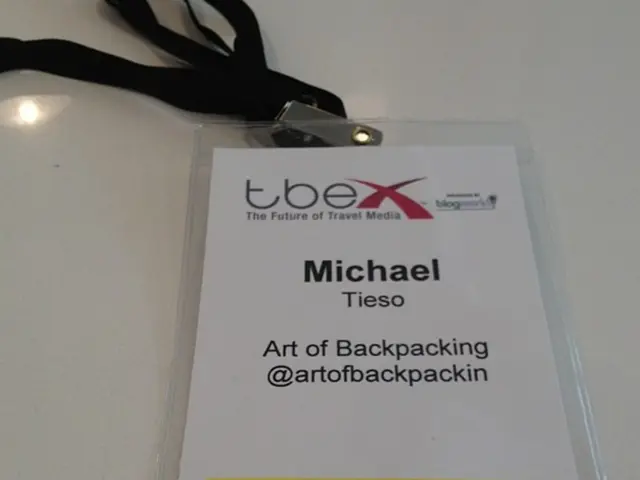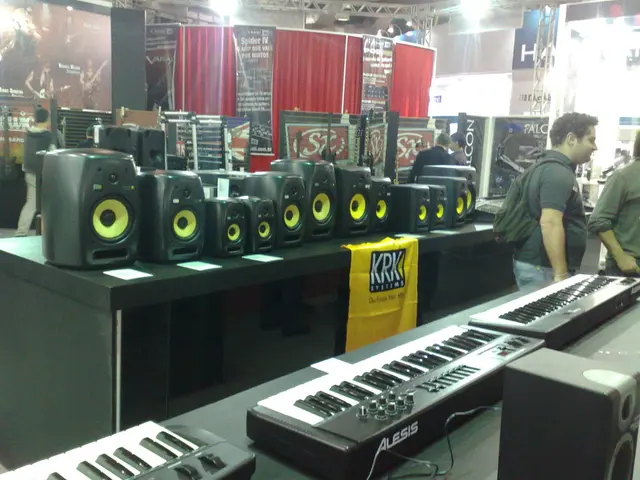Hyundai and Zeiss Collaborate on Developing Holographic Windshield Display Technology
The automotive industry is witnessing a significant shift with the development of Holographic Windshield Displays, or Holographic Head-Up Displays (HUDs). This technology, which has been gaining momentum since the early 2020s, promises to revolutionise the driving experience by enhancing safety and providing an immersive infotainment experience.
Timeline & Technological Advancements
The industry's adoption of HUDs has been on the rise, with traditional curved HUDs being gradually replaced by augmented reality HUDs (AR-HUDs). By 2024, AR-HUD installations reached over 900,000 units globally, marking a growth of more than 300% year-over-year. This surge is largely due to advancements in display technologies such as waveguide and holographic projection methods, leading to improved image clarity, brightness, and field of view.
In 2025, the AR-HUD market is expected to install more than 1 million units, with total HUD installations nearing 5 million units. This year is considered a breakout year for automotive holographic display adoption, driven by advancements in connected vehicles and Advanced Driver-Assistance Systems (ADAS).
Innovations include better holographic waveguide display elements, enhancing augmented reality overlays, and reducing production costs, thereby widening accessibility beyond luxury models. Integration with ADAS also supports safer driving by projecting contextual navigation and hazard information prominently on or above the windshield.
Key Partners & Industry Players
Key partnerships are instrumental in driving this technological advancement. For instance, China's XPeng and Huawei have formed a strategic partnership focusing on AR-HUD development. Established automotive suppliers such as Continental AG, Panasonic Automotive, and Nippon Seiki continue to dominate the market but face mounting competition from Chinese technology firms and startups focused on cost-efficient holographic solutions for a wider vehicle range.
Market & Future Outlook
The global holographic display market, including windshield applications, is expected to reach approximately USD 4.36 billion in 2025 and grow at a Compound Annual Growth Rate (CAGR) of about 18% through 2030. Automotive AR-HUD adoption is a significant growth driver, especially in Germany, China, and North America over the next 2-4 years.
Integration of holographic HUDs into mainstream vehicles is likely to expand due to rising consumer demand for enhanced safety, infotainment, and connected car functionalities. Improvements are expected to continue in holographic projection tech, cost reduction, and image quality.
Hyundai Mobis and ZEISS Collaboration
In this dynamic landscape, Hyundai Mobis, a world-renowned automotive supplier, is partnering with ZEISS, a leading technology enterprise operating worldwide in the fields of optics and optoelectronics. ZEISS Microoptics, a part of ZEISS, is the leading provider of sophisticated microoptical and holographic-optical solutions for various applications, including the automotive, hometech, and consumer sectors.
The partnership aims to develop the 'Holographic Windshield Display (Holographic HUD)' technology. This technology can transform the interior front design of vehicles by eliminating various display devices mounted on the dashboard. The projector projects content such as videos and images onto a transparent screen using lenses and reflectors.
Hyundai Mobis' technological development achievements in automotive displays include the first rollable display (2023) and swivel display (2022), and a transparent display applying hologram optical element technology (earlier this year at CES 2024). The technology displays various driving, convenience, and infotainment content in a wide space from the driver's seat to the passenger seat.
The partnership was announced on the 13th, and the companies plan to start mass production as early as 2027. Hyundai Mobis will develop and supply the projector, a key component technology, for the Holographic HUD system. ZEISS will focus on the development of the transparent and thin film applying holographic technology, which is needed to render content on the transparent windshield from the light emitted by the projector.
This collaboration is a significant step towards mass-market adoption of holographic windshield displays, promising to redefine the driving experience for the better.
Smart-home devices and gadgets are anticipated to benefit from advancements in holographic technology, as ZEISS, a key partner in the development of Holographic Windshield Displays, is also a leading provider of holographic-optical solutions for the consumer sector.
With the forthcoming mass production of Holographic Windshield Displays, expected as early as 2027, there is potential for this technology to extend beyond the automotive industry, opening up possibilities for holographic displays in smart homes.




